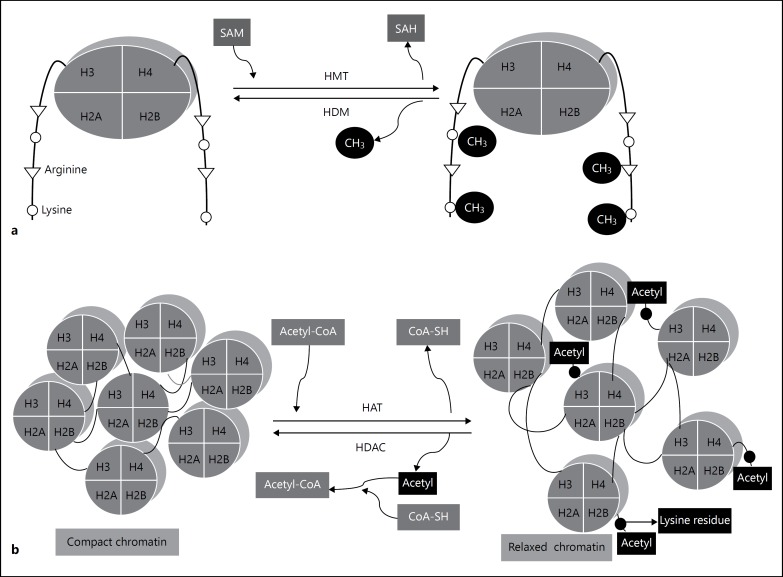Fig. 2.
Diagrammatic representation of different types of histone modifications. a Histone methylation/demethylation: HMTs and HDMs catalyze histone methylation and demethylation processes, respectively. Similarly, DNA methylation process, SAM acts as a methyl donor in histone methylation at lysine and arginine residues of histone tails. b Histone acetylation/deacetylation: histone acetyltransferase catalyze histone acetylation by adding acetyl group at lysine residues of N-terminal tails of the nucleosome. Acetyl-coenzyme A donates its acetyl group in this process and is changed to coenzyme-SH. Acetyl group neutralizes the positive charge of lysine residue and promotes decondensation of chromatin to initiate the transcriptional process. Conversely, in histone deacetylation process, acetyl group is removed from the lysine residues under the catalysis of HDAC enzyme. Loss of acetyl group from the lysine residues lead to chromatin compaction and transcriptional inactivation. c Histone phosphorylation: protein kinases catalyze the addition of phosphate group to the serine, threonine, and tyrosine residues of histone tails, which generally leads to transcriptional activation. ATP or GTP acts as a donor in the histone phosphorylation process. d Histone ubiquitination: in this process, carboxylic acid group of the last amino acid of ubiquitin, that is, glycine and the epsilon amino group of the histone's lysine get covalently attached through isopeptide bond under the influence of 3 enzymes: (i) ubiquitin-activating enzymes (E1s), ubiquitin-conjugating enzymes (E2s), and ubiquitin ligases (E3s).

